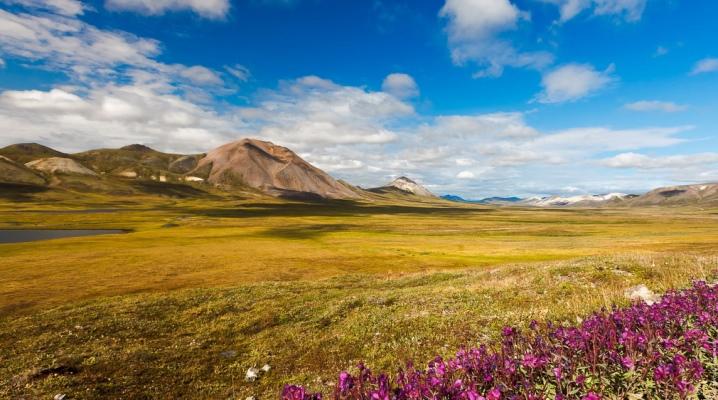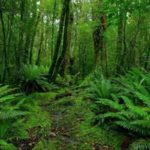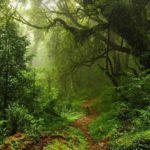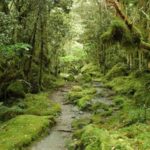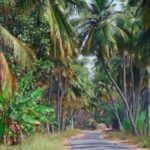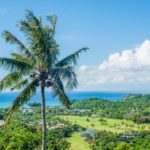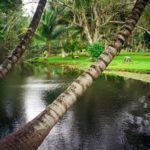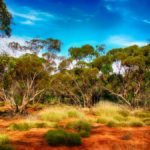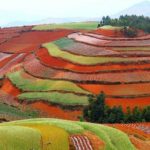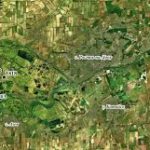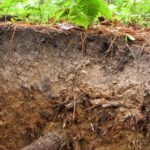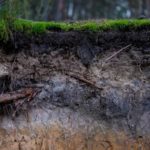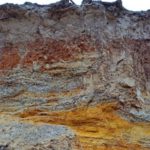The best types of soils are located in Eurasia. There are chernozems and many other types of soils. There are also extensive pastures and lands on which various types of crops are grown. Eurasia is characterized by complex terrain. Mountain systems greatly influence the flat terrain, redistributing precipitation and air flows. Below is a list of the main soil types in Eurasia depending on the belt.
Polar belt
It contains the following soil areas:
- polar desert soils - located in the north and localized on Severnaya Zemlya, Spitsbergen;
- arctic-tundra lands are located to the south;
- tundra or gley soils - stretch in the form of a continuous elongated strip across the continent.
Tundra zones are moving southward in the oceanic sectors of the continents, which is due to an increase in air humidity. In conditions of high humidity and low temperatures, moisture transpiration is disrupted. This causes physiological dryness. At the same time, woody vegetation disappears. The drier the air, the further north the forest vegetation moves and the tundra zone moves away.
Boreal belt
In the wettest oceanic zones, the soils of the southern tundra give way to small areas of subarctic meadows and woodlands. They are associated with subarctic soddy coarse humus and soddy-peaty lands. In Northern Europe, such lands are found in the flat areas of Iceland and on the Atlantic shores of Northern Norway.
Most of the boreal zone is occupied by forests. This zone is divided into several sectors that contain podzolic and taiga-permafrost lands. In Eurasia, the largest amount of frozen soils is found in Central Siberia.
Subboreal belt
This belt is distinguished by a variety of soils and a complex structure. The following sectors are distinguished:
- intracontinental - contains many latitudinal soil zones that replace each other from north to south;
- symmetrical oceanic - characterized by homogeneous soil cover;
- transitional from inland to eastern - here a series of inland sections changes the latitudinal direction to the meridional one.
The inland sector is characterized by the presence of gray forest soils and chernozems. There are also gray-brown, chestnut, desert-steppe soils here. They form concentric arcs that open wide to the south.
The area of gray forest soils, located in broad-leaved and small-leaved forests, is very narrow and broken. It is expressed exclusively in the inland sector.
Subtropical zone
It is distinguished by the absence of pronounced latitudinal soil areas, except for the vast zone of subtropical deserts and desert lands characteristic of them. They occupy the entire continental part of the continent. The soil cover and zonation in the eastern and western oceanic sectors are very different.
To the west, the localization zones of red soils and yellow soils are replaced by meridional soil zones. Such structures are present in the subtropical zone on the loess plateaus in China, but here the soil areas do not form clearly defined meridional zones.
The western oceanic sector has a Mediterranean climate. It is characterized by high dryness in summer and humidity in winter. Taking into account the degree of moisture, the distribution zones of brown soils are replaced by gray soils.
Tropical zone
The area where deserts are located is the territory of the Arabian Peninsula. Zonal soil types include brown desert lands. In Indochina, Hindustan, and the Malay Archipelago there are the following areas:
- reddish-brown lands of deserted savannas;
- brown-red soils of xerophytic tropical forests;
- red-brown lands of dry savannas;
- red-yellow ferrallite soils of permanently humid tropical forests.
The red-yellow ferrallite soils of the moist forests of the equator are found in humid island areas. At the same time, the eastern shores of Indochina reach the northern tropics. Also far to the north are the red and red-brown soils of the savannahs, which occupy the drier zones of the interior plains.
Eurasia is characterized by different types of soils. They differ in structure and fertility. Many of the soils can be used in agriculture.

